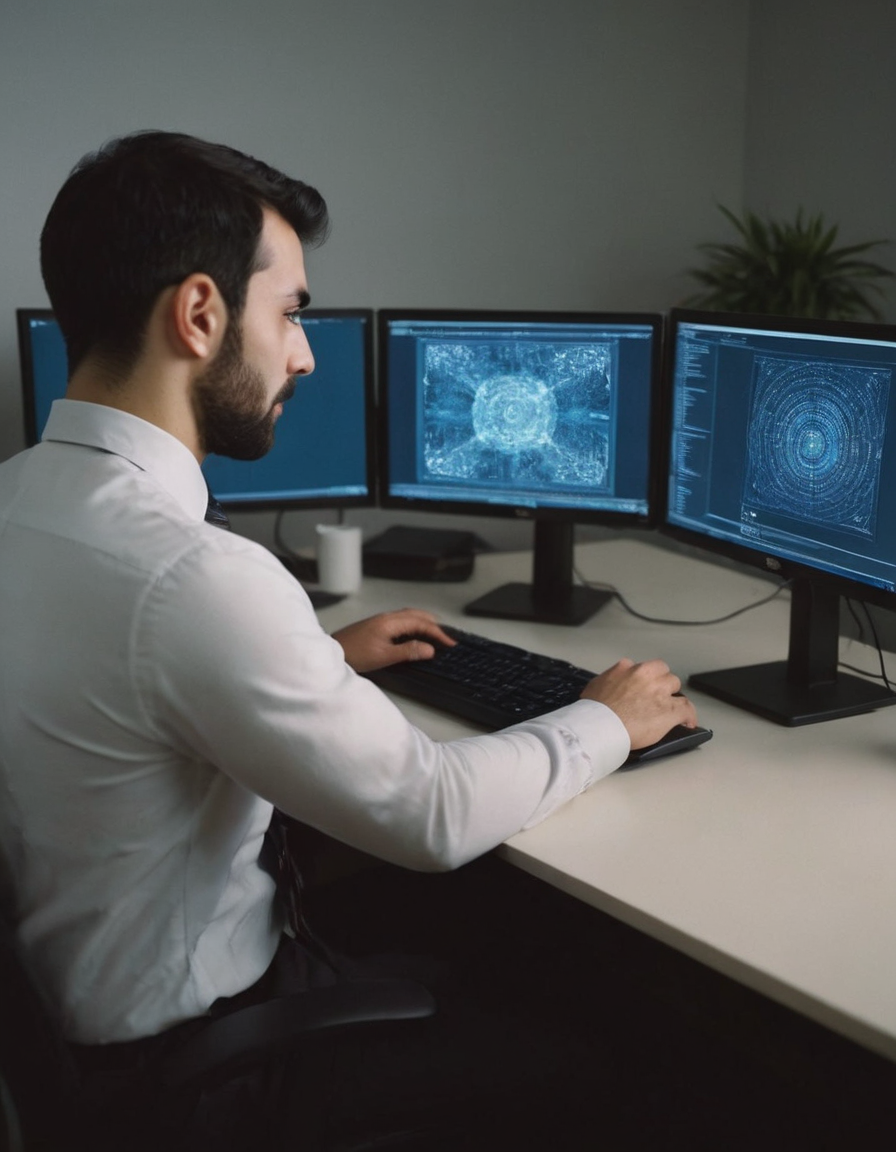AI as a Force Multiplier: Empowering Adaptive Intelligent Workers

In the dynamic world of work, one constant remains: the human factor. While AI and automation have been reshaping industries, they're not replacing human intelligence but rather augmenting it. AI is emerging as a force multiplier, empowering intelligent workers who can adapt and flourish in this new era. Let's explore the impact of AI on these adaptive professionals and discover how they're leveraging AI to boost productivity, creativity, and job satisfaction.
AI as a Cognitive Assistant
AI is transforming the way we work by acting as a cognitive assistant, taking over routine tasks and providing real-time insights. Adaptive workers embrace this shift, using AI to:
- Process and analyze vast amounts of data quickly and accurately, freeing up time for strategic thinking and decision-making. For instance, a marketing manager can use AI-powered analytics tools to analyze customer data, identify trends, and make data-driven decisions about campaigns.
- Predict trends and patterns by learning from historical data and identifying anomalies, thus enabling proactive problem-solving. A sales representative can use AI to forecast sales, anticipate customer needs, and tailor their approach accordingly.
- Automate repetitive tasks, such as data entry or scheduling, allowing workers to focus on complex, creative, and interpersonal aspects of their jobs. A project manager can use AI-driven project management tools to automate task allocation, progress tracking, and resource planning.
AI and the Art of Human Judgment
While AI excels at processing data and identifying patterns, it lacks human intuition, empathy, and ethical understanding. Adaptive workers capitalize on this by using AI to enhance their decision-making, not replace it. They combine AI-driven insights with their unique human perspective to:
- Make well-informed decisions by considering both quantitative data and qualitative factors. A human resources professional can use AI to analyze employee engagement data and identify potential retention issues, but it's up to them to interpret the results and implement appropriate interventions.
- Innovate and problem-solve by drawing on their experiences and applying AI-generated insights in novel ways. A product designer can use AI to analyze market trends and customer feedback, but it's their creativity and understanding of user needs that drives innovative product design.
- Build and maintain relationships by using AI to gain a deeper understanding of clients, customers, or colleagues, fostering stronger connections. A customer service representative can use AI-powered sentiment analysis to gauge customer satisfaction, but it's their empathy and communication skills that turn frustrated customers into loyal ones.
AI and Lifelong Learning
Adaptive workers understand that continuous learning is key to staying relevant in an AI-driven world. They leverage AI tools to:
- Personalize their learning experiences by using AI-driven platforms that adapt to their skills, interests, and learning pace. An AI developer can use AI-powered coding platforms like GitHub Copilot to learn new programming languages and improve their skills.
- Stay updated on industry trends by following AI-curated news feeds and reports. A data scientist can use AI-driven news aggregators like Feedly or Nuzzel to stay informed about the latest developments in their field.
- Develop AI-related skills through online courses and workshops, positioning themselves as AI-savvy professionals. A marketing professional can enroll in AI-focused courses on platforms like Coursera or Udacity to learn about AI-driven marketing strategies.
Navigating the AI Workplace
As AI becomes more integrated into the workplace, adaptive workers are navigating this new landscape with curiosity and enthusiasm. They're open to:
- Experimentation and iteration, continually refining their AI-driven workflows to maximize productivity and creativity. A content creator can use AI-powered content generation tools like Copy.ai or Frase.io to draft blog posts or social media updates, then refine the output based on their unique voice and style.
- Collaboration with AI, viewing AI tools as partners rather than competitors, and fostering a symbiotic relationship. A graphic designer can use AI-powered design tools like Runway ML or Adobe's Sensei to generate design ideas, then refine and finalize them using their creative expertise.
- Adult conversations about AI, actively engaging in discussions about AI ethics, regulation, and the future of work. Adaptive workers understand the importance of responsible AI development and use their voice to shape the AI landscape.
Embracing AI as a Force Multiplier
AI is not a threat to intelligent, adaptive workers; it's an opportunity. By embracing AI as a force multiplier, these professionals are unlocking new levels of productivity, creativity, and job satisfaction. They're not just keeping up with the AI revolution – they're leading it.
So, let's celebrate the adaptive worker who welcomes AI as a cognitive assistant, a collaborator, and a catalyst for lifelong learning. Together, humans and AI can achieve more than either could alone, driving innovation, growth, and success in the process.
